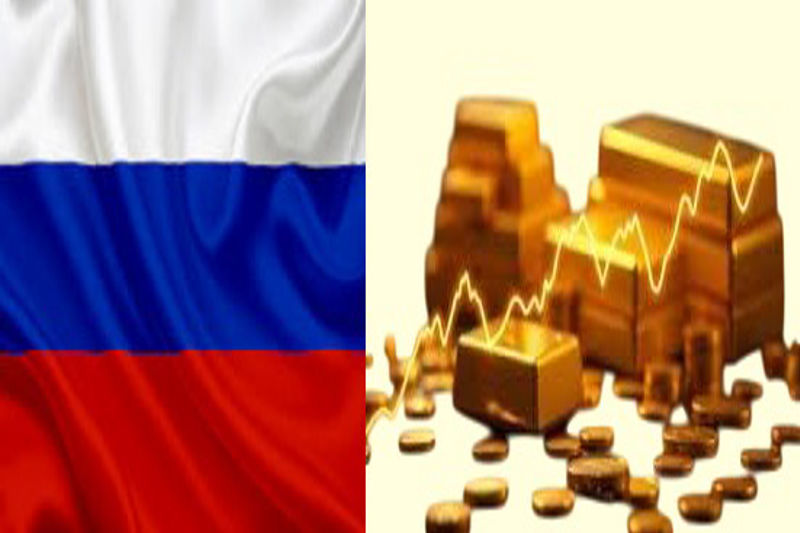Gold has long been a cornerstone of economic security for nations, and Russia is no exception. Russia has significantly expanded its gold holdings during the last ten years, becoming among the top five gold holders in the world. But just how much gold does Russia actually possess? And as global economic uncertainty grows, will traders increasingly turn to gold as a key asset?
In this article, we examine Russia’s gold reserves, their strategic importance, and whether gold will dominate future trading markets.
How Much Gold Does Russia Hold?
As of 2024, Russia’s official gold reserves stand at approximately 2,330 tons, making it the fifth-largest holder of gold behind the U.S., Germany, Italy, and France. However, what makes Russia unique is the speed at which it has accumulated gold doubling its reserves since 2014.
Key Facts About Russia’s Gold Reserves:
Rapid Accumulation: Russia added over 1,800 tons of gold in the last decade, moving away from U.S. dollar assets.
Stored Domestically: Unlike some nations that store gold abroad, Russia keeps most of its gold in its own vaults, reducing foreign dependency.
Sanctions Hedge: Gold provides a financial shield against Western sanctions, as it cannot be easily frozen or seized.
Central Bank Purchases:The Bank of Russia has been a major buyer of gold, especially after 2014 sanctions.
Why Is Russia Hoarding Gold?
Russia’s aggressive gold-buying strategy is driven by several key factors:
1. Reducing Reliance on the U.S. Dollar
Since the 2014 sanctions, Russia has been ditching the dollar in favor of gold and other currencies (like the yuan). A gold-backed ruble could strengthen its economic independence.
2. Protection Against Sanctions & Economic Warfare
Gold is a physical, non-political asset unlike dollars or euros, which can be blocked by Western governments. By stockpiling gold, Russia ensures liquidity even in a financial crisis.
3. Preparing for a Multipolar Financial System
Russia, along with China and BRICS nations, is pushing for a gold-backed alternative to the dollar-dominated system. If successful, gold could become a primary reserve asset.
4. Domestic Gold Production
Being the second-largest producer of gold in the world (behind China), Russia can increase its reserves without being heavily dependent on imports.
Will Future Traders Shift to Gold?
Given Russia’s moves and global economic trends, gold is gaining traction among traders. Here’s why:
1. Geopolitical Instability & Safe-Haven Demand**
With ongoing wars, trade wars, and sanctions, investors seek gold’s stability over volatile stocks or crypto currencies.
2. Central Banks Buying Record Amounts of Gold
Not just Russia China, India, and Turkey are also stockpiling gold, signaling long-term bullish demand.
3. De-Dollarization Movement
As more countries reduce dollar dependency, gold-backed trade settlements (like Russia-China deals) could rise, increasing gold’s trading volume.
4. Digital Gold & Blockchain Trading
Gold-backed cryptocurrencies and tokenized gold (like PAX Gold or Russia’s proposed digital ruble-gold system) make gold more accessible to traders.
Challenges for Gold as a Trading Asset
Despite its strengths, gold has some limitations:
No Passive Income: Unlike dividend stocks or bonds, gold doesn’t generate yield.
Market Manipulation Risks: Large holders (like the U.S. and Russia) can influence prices.
Competition from Bitcoin: Some view Bitcoin as “digital gold,” though gold remains less volatile.
Conclusion: Is Gold the Future of Trading?
Russia’s massive gold reserves highlight its strategic move away from Western financial systems. As economic uncertainty grows, gold is becoming a critical asset for both nations and traders.
While it may not replace stocks or crypto entirely, gold will likely play a bigger role in trading portfolios especially if Russia and BRICS succeed in creating a gold-backed financial alternative.
Final Thought:
Traders should monitor central bank gold purchases, geopolitical risks, and digital gold innovations to capitalize on gold’s potential surge.


